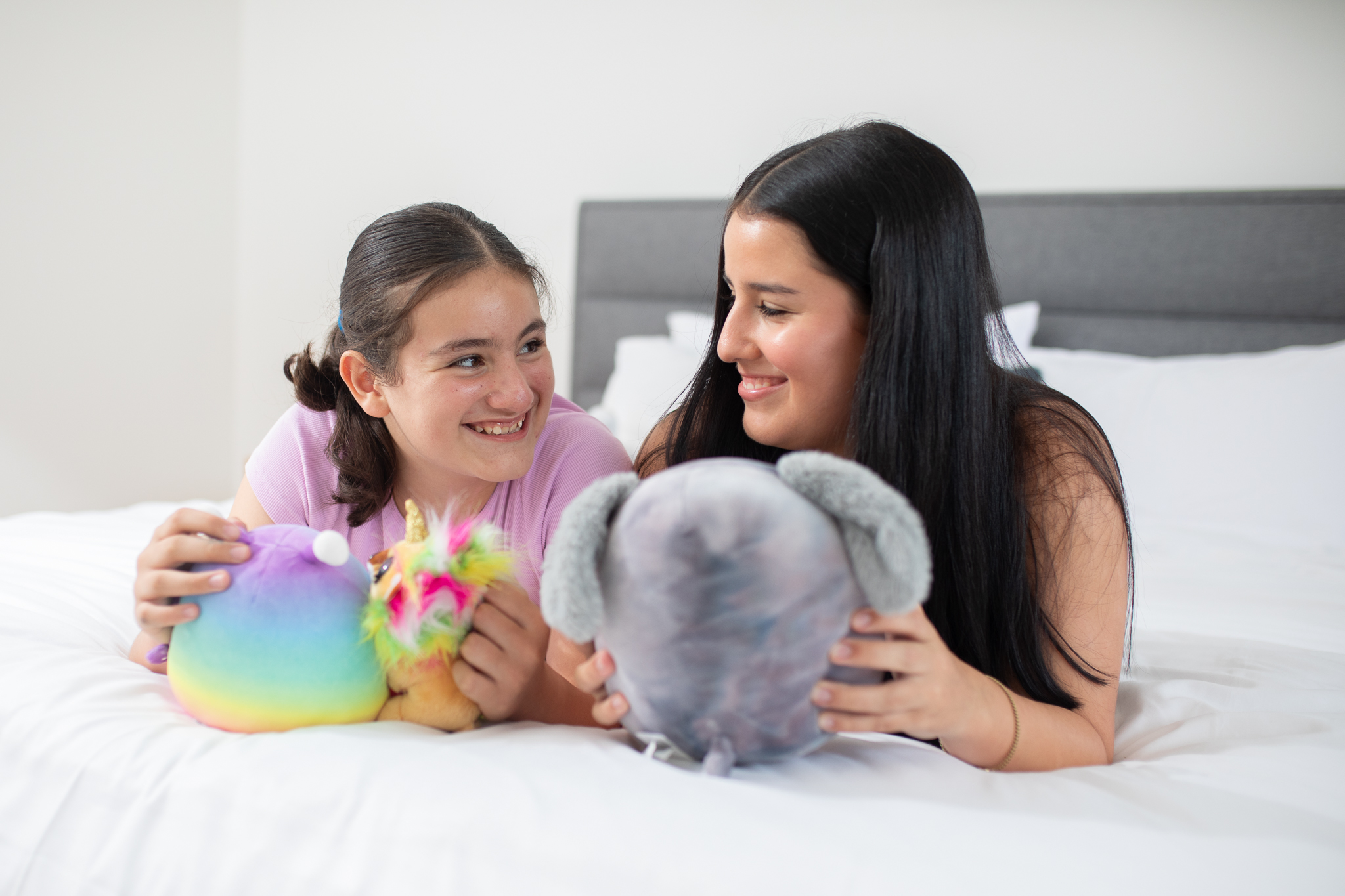A guide to preparing autistic children for high school

It’s fast approaching the end of the year, which means there are many big transitions are on the horizon.
One of these particularly large transitions is the one from primary to secondary school, which can be daunting for all children, let alone those on the autism spectrum. With big responsibilities to handle and social minefields to navigate, this transition can be incredibly challenging for both a person with autism and their family.
In this post, we’ll discuss how you can best support your autistic child to navigate the big transition from primary to high school. We’ll address the different elements of this transition that will need to be considered, as well as links to further information and support:
- Consider the diagnosis
- Start early and gradually
- Build positive relationships with staff
- Consider social support
- Run your own race
Consider the diagnosis
Parents and carers can sometimes be apprehensive about disclosing their child’s autism diagnosis with a school. This might be particularly nerve-wracking if their child has been diagnosed recently. Often, parents and carers worry their child will be ‘labelled’ or treated differently or be impacted negatively by myths and misconceptions that surround autism.
However, many educators and other staff members in high schools already have firsthand experience supporting autistic children as well as an understanding of what autism is and how it can impact an individual's high school experience. Although each individual will have varying degrees of autism understanding, it’s highly likely they have effectively supported autistic students before. And the more information relevant school staff have about your child’s strengths, interests, capabilities and support needs, the better education and care they can provide.
Ultimately, deciding if, when and how to disclose a child's autism diagnosis is your choice. For example, you might decide you’d only like to disclose the diagnosis to a select few staff members. However you decide to approach the disclosure process, know that you are providing those with the responsibility of educating and caring for your child with the information they need to do so successfully.
If you have disclosed your child’s autism diagnosis to a school and have concerns or issues with how they’ve responded, discover some strategies for what to do next here.
Start early and gradually
Most autistic people require more time and preparation to adjust to big changes to their routines or lifestyle. There are varying ways you can approach this preparation, but regardless of what you do, it's best to start sooner rather than later.
Ideally, a child with autism is preparing to transition to high school as early as Term 1 Year 6. This gives them adequate time to prepare emotionally and socially for this big change and the new expectations and responsibilities that come with it. And this preparation doesn’t just involve the child; it requires input from their family, therapy team and the relevant staff at the school they will attend. Discussing the transition to high school with professionals that support your child allows them to tailor their programs and services to meet your child’s changing needs.
Outside of more formal preparations for high school, there are some simple things that you can do as a family to make the process less daunting. It could be as simple as driving past the high school your child will attend every second week so your child becomes familiar with the area. It could be practising taking the public transport route your child will take to school. Or, it could be establishing an after-school routine that can continue into the high school years. Whatever you decide to do, start sooner rather than later so you can set your child up for success.
Build positive relationships with staff
Perhaps one of the best things you can do as a parent or carer of an autistic child entering high school is to build a positive and productive relationship with key staff. Examples of these key staff members could include:
- Classroom teachers (particularly for subjects your child finds challenging)
- Student Learning Support Officers (SLSOs)
- Support staff, such as counsellors or year advisors
- Administration staff
Depending on what kind of high school your child is attending, these roles may look and operate differently, or be referred to by different titles. It’s important to familiarise yourself with the roles and responsibilities of the staff that will be working with your child so that you can direct your questions, concerns and feedback to the right people.
By starting this process early, you’ll give yourself enough time to understand who will be supporting your child and how. In turn, this gives relevant staff members time to get to know your child, including their strengths, interests and how they can be best supported. Having a positive and productive relationship with relevant staff members where open, clear and respectful communication are prioritised will make the high school transition easier for everyone involved.
It's not only important to form these positive relationships, but to sustain them throughout your child’s high school years. Here are some tips for communicating effectively with your child’s high school:
- Check in regularly with relevant staff members (e.g., learning support team) to update each other about your child’s progress, challenges and changes.
- Establish the best way to communicate with the school and for the school to communicate with you. This could be phone calls, emails or in-person meetings.
- If you find meetings with your child’s school overwhelming or nerve-wracking, bring someone with you. This could be your partner, a friend or family member, who can help you record information and ask questions.
- If the school informs you that your child is struggling or displaying challenging behaviours, ensure there is an effective plan to manage this that you, the school and the child’s therapy team (where relevant) agree to.
Consider social support
High school involves a big increase in academic expectations, but it also presents big social challenges for children on the autism spectrum. Even for children who are coming to their high school with plenty of existing friends, new classes, events and ways of interacting socially can be incredibly stressful to navigate.
Some schools will have buddy systems in place to support students with the social aspect of transitioning to high school. This might involve pairing up new students to navigate different situations together, or it might see an older student spend time with your child in their first few weeks to ensure they’re settling in. They might assist your child with tasks such as finding classrooms, reading their timetable and knowing where to go at recess and lunch. Find out if your school can adapt these existing processes to better suit your child(e.g., having a buddy for a longer period of time, finding a buddy with similar interests to your child).
If you, your child’s therapy team or their primary school are aware of any strategies that support your child with making and keeping friends, ensure these are implemented your child’s high school. It's also helpful to notify the school of activities or situations that make social situations more challenging for your child (e.g., group work or assigned seating). This can help teachers and other school staff make appropriate accommodations for your child where necessary.
High schools often have clubs and co-curricular across sport, the creative arts, academic activities and other areas, particularly for junior students. Taking part in these activities is a great way for your autistic child to meet like-minded students while developing their skills and confidence. Whether it’s computers, chess or even choir, these clubs, groups or activities might help your child find their people.
Having friendships outside of high school is also important, and can sometimes be easier to navigate for a child with autism. Finding social groups or activities they can take part in might enable them to find people that share their interests more easily. Encouraging children to maintain existing friendships with primary school friends or friends from other areas can also be helpful, particularly at a time where your child is meeting so many new people all at once.
Remember, high school can present social challenges for all children, whether they’re autistic or not. It's a period where friendships evolve and change rapidly, and a time where your child will greatly benefit from a supportive and non-judgemental environment at home to share their feelings and experiences. By nurturing a positive environment at home and empowering your child to navigate friendships as independently as possible, you'll increase their confidence in themselves.
Unfortunately, some neurodivergent students can experience bullying in their high school years. If you know or suspect that your child is being bullied, it’s important to notify their school straight away. You can also refer to these resources in the meantime.
Run your own race
High school presents unique opportunities, challenges and changes for children on the autism spectrum. As a result, your child might not participate with different areas of high school life in the same way as their neurotypical peers, and that's completely fine. Just because your child doesn't attend every carnival or complete every exam doesn't mean they value or enjoy their school experience as much as other children.
Sometimes, there can be pressure to have a particular high school experience or meet certain milestones by certain times. This pressure can be particularly difficult for autism families, whose milestones and journeys look entirely different. Be conscious of how the opinions and influences of others are affecting you and your family, and invest your energy in focusing on your family's needs and goals rather than the goals of others.
It can be helpful for autistic children (and their families) to take a few extra breaks from school to recover from the immense academic and social demands it brings. This could be a designated mental health day every now and again or another approach that works best for your child and your family more broadly.
And finally, remember that high school is just another transition in you and your family's journey. It can be tricky for all children, autistic or not, and although it can feel incredibly daunting before you start, you might be surprised at what your child is able to achieve once they settle in.
For further information and support, you can read our other articles:






